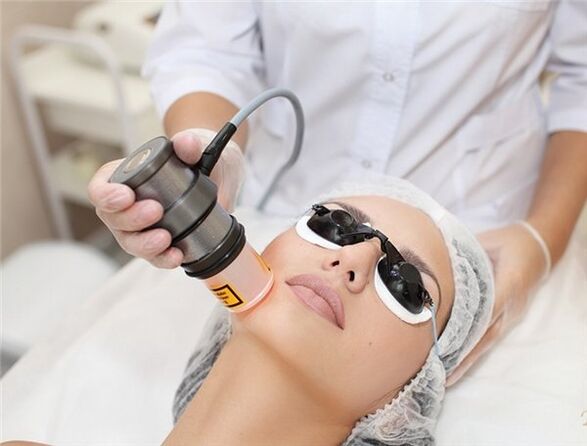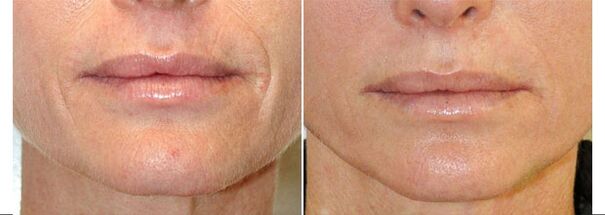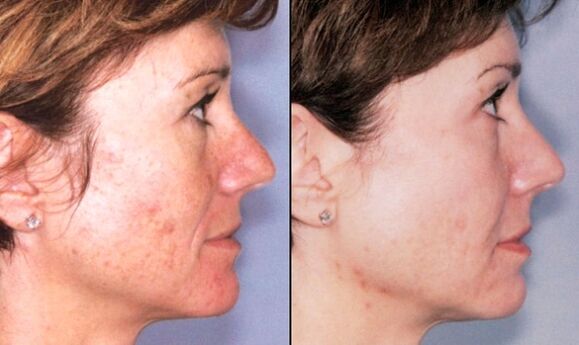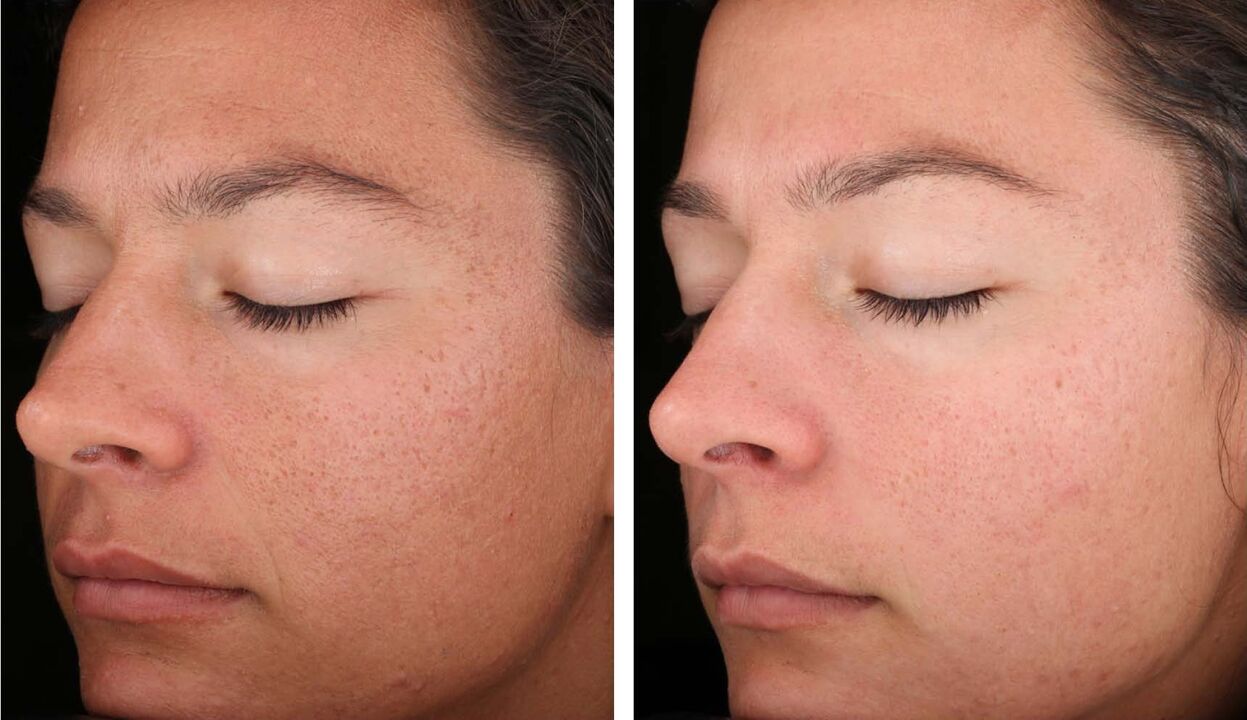The use of a laser in cosmetology has made a real revolution in the field of non -surgical rejuvenation.The painful periods of rehabilitation after plastic surgery have long been forgotten, Botox injections that turn the face into a motionless mask are a thing of the past.Women have the opportunity to preserve youth with the help of non -invasive and painless procedures.Beauty still requires victims, but this time they will be exclusively financial.

What is laser rejuvenation
The skin of the face, perhaps, is the most vulnerable place for the adverse environmental effects.Atmospheric factors, poor ecology of large cities, poor -quality nutrition is external “destroyers”.In addition, the human face is not a theater mask, it "lives".A person talks, eats, laughs, cries, grieves and generally lives with emotions.This cannot but affect the skin: it is covered with facial wrinkles.Age -related changes are manifested in the gradual loss of elasticity and the ability to self -heal: the contour of the face is blurred, the eyelids are sag, nasolabial folds are formed, and corners of the mouth are lowered.An unsightly picture, isn't it?But it can be “rewritten” using laser rejuvenation.How does the "magic" beam for aging skin work?The laser solves different age -related problems of the skin using individual settings.
Efficiency, advantages and disadvantages of laser rejuvenation
Laser rejuvenation has one indisputable advantage over other methods: the result is visible after the first procedure. And this is important, as it inspires a woman's confidence that she is going on the right way.The rejuvenation course allows you to look 5-10 years younger.
Advantages of the method:
- replaces complex plastic surgery;
- activates the processes of skin renewal, while stimulating not only external rejuvenation, but also positive processes in the deep layers;
- minimal pain;
- A short recovery period.
There are less disadvantages than advantages, but they are:
- The anti -aging effect lasts only a few years: from 3 to 5, depending on individual characteristics;
- The laser copes only with small and medium wrinkles;
- The procedures are expensive.
In cosmetology, laser rejuvenation is considered one of the safest ways to influence the skin that practically do not cause complications, provided that the correct execution is correctly.
Types of laser rejuvenation
Cosmetology uses the possibilities of a laser for rejuvenation and offers the most diverse procedures in scale.By and large, all of them are divided by the degree of influence on two categories:
- non -abroad, that is, not damaging the skin;
- Ablation, damaging the skin.
There are types of procedures when the skin is damaged only partially.
Laser grinding
The term "ablation" means the destruction of tissues by means of radiation, which occurs with laser grinding. This is the most painful procedure of all carried out with a laser.As a result of laser grinding, the skin is completely renewed, which positively affects its appearance.In the process of processing the skin with a laser, the surface layer is sequentially evaporated, leaving an open bleeding surface.The operation is carried out under local anesthesia.As a result, the patient receives:
- complete restructuring of the upper layer of the skin;
- elimination of scars and scars;
- smoothing wrinkles, partially even deep;
- Facial lifting.

Grinding is carried out by Erbiev and carbon dioxide (CO2) lasers.It has significant drawbacks:
- soreness;
- danger of infection;
- Possible impaired pigmentation.
Fractional thermolism
Unlike grinding, during fractional thermalization, damage is not a total nature. Using a laser pulse on the skin, microscopic cuts are made in strictly defined places.Only 15% of the surface processed is subjected to damage.For thermalization, erbium and carbon dioxide lasers are also used.Field thermolysis does not leave bleeding wounds, but the effect of its use is no worse than grinding: it pulls up sagging skin and evens out its relief.Thermolysis is used in patients with thin skin and for the correction of the eyelids.Fraxel, as also called fractional thermolysis, effectively eliminates age spots.Fractional laser photothermolysis - a full replacement for blepharopo -plate
Deep laser thermolifting
The laser, along with other hardware techniques, is successfully used for a deep face tightening.The beam penetrates into the deeper layers of the skin and warms up the fabric at a given power.Their controlled damage causes a reaction in the form of increased formation of collagen and elastin.Outwardly, this manifests itself in the form of tightened skin and clear contours of the face.
Thermolifting is used for:
- Brushes of cheekbones, cheeks and chin;
- elimination of swelling under the eyes (at the same time removes dark circles);
- alignment of the nasolabial furrow and the fight against small wrinkles around the eyes;
- smoothing nasolabial folds.
Thermolift refers to non -analysis methods of exposure.Deep laser thermolifting can significantly improve the look around the eye
3D rejuvenation
3D rejuvenation is a modern way of laser impact, which includes three stages:
- The cosmetologist corrects all visible defects: scars, pigmentation, expanded pores, circles around the eyes.
- Thermalifting of problem areas is performed.
- The skin is smoothed with a sparing laser grinding.
A comprehensive approach to rejuvenation using a laser gives a noticeable result.To achieve the desired effect, there is usually a sufficient 3D rejuvenation course.

4D rejuvenation
4D rejuvenation is a laser procedure that is carried out on a special installation, which includes erbium and neodymium lasers.Their combination provides exposure to both the surface and on the deep layers of the skin.4D rejuvenation is patented technology and includes 4 stages:
- The first is the effect on the inside of the cheeks through the oral cavity.As a result, their lifting occurs due to the rewinding of collagen fibers, healing of internal wounds, correction of the contour of the face.The effect is similar to filler injections, but lasts longer.
- The second is the processing of the surface of the face in order to eliminate visible defects: pigmentation and scars.Result: alignment of the relief and skin color, increase in tone, elimination of vascular nets.
- The third is a deep effect of heat to stimulate metabolic processes in the skin.In fact, this is a deep laser thermolifting.
- The fourth is the final procedure that gives the skin the final smoothness, uterity and narrowing pores.
In the process of 4D rejuvenation, several procedures are carried out, which are aimed at quick and high -quality elimination of imperfections and signs of aging, all four stages are carried out in one session and take about an hour and a half.The method is used in a wide age range: from 27 to 67 years.
Laser carbon peeling
Carbon piling using a laser refers to the most gentle procedures of this kind.Its task is to cleanse the face of keratinized skin and start the process of cell regeneration.It combines the actions of a laser beam and a special carbon gel, which is applied to the face.How the peeling works: carbon nanogel glues dead scales, extracting excess fat from the leather and sebaceous traffic jams that have clogged into the pores;A short laser flash evaporates the gel, decomposing it into two components: CO2 and water.At this moment, the skin of the skin are freed from their contents, “throwing” all the “dirt” to the surface.The process can be compared with the micro -explosion.The further effect of the laser, due to which the synthesis of collagen is stimulated, occurs on deeper layers of the skin.Laser carbon peeling not only rejuvenates, but also cleanses the skin.The carbon gel also has an antibacterial effect on the skin. It prevents the development of infections and kills existing pathogenic microorganisms.In addition, it restores the water and acid-base balance of the skin.
Laser biorevitalization
Biorevitalization is a term well familiar to the regulars of cosmetic salons.Usually it involves the introduction of hyaluronic acid into the skin with injection.The laser variety of this procedure is also effective, but less painful and refers to non -invasive rejuvenation methods.Hyaluronic acid is a substance that begins to catastrophically lack our skin after 30 years.In many ways, the aging of the skin owes precisely its low content in the body.Creams with hyaluron have a temporary effect that lasts only during the period of use of a cosmetic product.Laser biorevitalization saturates the skin with moisture and gives, unlike creams with hyaluronic acid, a long -term effect.Laser biorevitalization allows hyaluronic acid molecules to penetrate into the deep layers of the skin, attract and preserve moisture in it, while stimulating the synthesis of collagen and elastin.The biorevitalization gel, in addition to the acid itself, contains a substance that overwhelm the activity of the enzyme that destroys it when it enters the body.During the procedure, a gel with low molecular weight hyaluronic acid is applied to the skin, which is then treated with a laser with a special nozzle.The effect of the procedure:
- The skin is moistened and becomes more elastic;
- Small wrinkles are smoothed;
- the contour of the face is pulled;
- swelling and pigmentation under the eyes are reduced;
- The tone of the skin is aligned.

Laser biorevitalization makes the skin fresh and toned.Laser biorevitalization is used to prepare the skin for more serious cosmetological procedures: chemical peels, plastic surgery and so on.
Indications and contraindications
Laser rejuvenation is shown to everyone who begins to fade the skin or has its significant defects:
- wrinkles of different origin;
- dull complexion;
- gravitational ptosis;
- a blurry oval of a face;
- skin defects;
- impaired pigmentation;
- swelling under the eyes.
Some laser procedures can be carried out even by adolescents to eliminate the consequences of acne. In general, the aging mechanism in humans is launched at about 25 years old.But for each he proceeds with his speed due to many factors.Today, cosmetologists call on a decision on the use of laser rejuvenation to focus not so much on age as on the condition and needs of their skin.Like any external effect on the body, laser rejuvenation has a number of contraindications.They can be absolute and temporary.Absolute medical contraindications include:
- diabetes mellitus;
- tumor processes;
- skin diseases;
- blood diseases;
- infectious and viral diseases;
- mental abnormalities;
- Heart and vascular diseases.
Temporary contraindications include:
- the presence in the zone of exposure to herpetic rashes;
- Pregnancy and breastfeeding;
- fresh tan;
- Recently conducted chemical peeling.
Preparation for the procedure and skin care after it
Special preparation for laser rejuvenation is not required, but still cosmetologists give some tips, which should not be done 2-3 days before the procedure:
- apply makeup;
- sunbathe;
- do the face cleaning.

Typically, a fractional thermalization session (the most common type of laser rejuvenation) lasts about an hour.After its end, a protective restorative cream is applied to the face.Next, the patient receives a skin care memo during rehabilitation.After the laser procedure, you must use healing creams.After the procedure, a burning sensation on the skin will be felt on the skin for 1-2 hours.Redness and edema will pass after about 1-3 days.
Recommendations after laser rejuvenation:
- For speedy healing, it is recommended to use ointments with dexpanthenol and antibacterial components that will prevent infection;
- After redness passes, you can use creams with hyaluronic acid;
- Regardless of the time of year, when going out into the street, it is necessary to apply sunscreen to the face;
- It is better to postpone water entertainments in the form of a pool or sauna for a while, and you can wash and take a shower on the day of the procedure.
Possible consequences
After a well -carried out procedure of laser rejuvenation of negative consequences, there is almost no one.If the edema lasts longer, it can be reduced by reducing fluid intake and using hyaluronic masks.Itching and skin rash can talk about allergies or individual intolerance to the components of drugs or drugs used during the procedure.Such manifestations can also be observed in young people with vegetovascular dystonia.The consequences can be small scars or a vascular mesh.It is impossible to do anything with them, but over time they will become barely noticeable. The standard rehabilitation period is 14 days. If the skin has not recovered during this time, it can help her vitamins, diet and protection against sunlight.After laser rejuvenation in rare cases, a vascular mesh may appear














